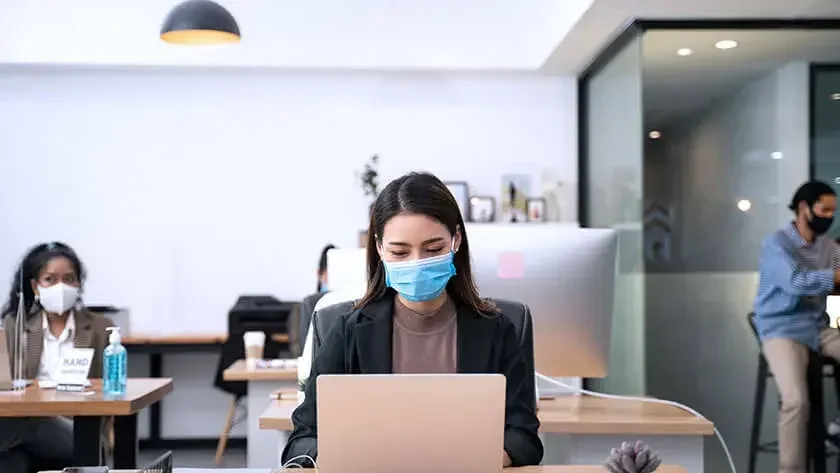Whether your business is shuttered for the time being or operating at full capacity with restrictions, there will come a day when the world returns to some form of normal. No one knows when that day will arrive, but after over a year of living with the constant threat of COVID-19, customers and employees will expect ongoing safety protocols long after the pandemic itself is a memory.
Here are five strategies you can implement right now to ensure your customers and employees feels comfortable and safe doing business with you.

1. Advertise your protocols
Whether for employees or customers, companies must explicitly communicate how they are following their region or state's safety guidelines to the letter, says Dan Pontefract, CEO of the leadership and organizational culture consulting firm The Pontefract Group and author of "Lead. Care. Win."
"The more a company is open and transparent about their safety protocols, the more likely people will trust their attempts to reopen," he says.
Post signs at the entrance and throughout the business that gives information on the policies you've adopted. If you require that your employees be vaccinated when possible, consider sharing that information, too. You could even provide them with buttons that say, "I've been vaccinated."
2. Take temperatures daily
As the pandemic continues, some offices have become lax in their COVID-19-safety practices, says Brooke Ehrlich, a labor and employment lawyer and partner at Fort Lauderdale, Fla.-based law firm Weiss Serota Helfman Cole & Bierman.
"Don't become complacent now, particularly when we are nearing better days and the distribution of the vaccine," she says. "Requiring daily temperature checks still provides some layer of protection, and also serves as a daily reminder to employees that they need to stay home if they feel unwell."
Setting up stations as employees enter the workplace can be a good first screening method. If your business requires close contact with customers, consider asking them to be checked at the door, as well.
3. Require masks
While this step may seem obvious, Ehrlich says she still hears from employees whose workplaces do not require masks.
"The CDC is clear that people age 2 and older should wear masks in public settings and when around people who don't live in their household," she says. "This includes the workplace. Wearing a mask offers protection for others as well as the mask-wearer. Make mask-wearing a requirement."
Managers must lead example, adds says MaryAnne Hyland, professor of human resource management at Adelphi University's Willumstad School of Business.
"If managers don't follow safety protocols, speak negatively about safety protocols, or are dismissive of employee concerns, the employees may feel that the company is following a check-the-box approach to compliance rather than truly caring about employee safety," she says.
Protect employees by mandating mask use by customers, as well. State your policy with a sign at your entrance and provide masks at the front door if a customer doesn't have their own.
4. Be transparent
Employers are often concerned that they'll alarm their employees by informing them about potential exposures or infections at work and, as a result, may err on the side of silence, says Ehrlich.
"This can lead to gossip and increase concern," she says. "My experience has been that employees feel safer if they are given as much information as possible. Even without identifying the name of the infected individual, companies can let employees know when an infected employee was last in the office, when the infected employee first began experiencing symptoms, that the infected employee is now in quarantine, and that all individuals that were in close contact with the infected employee have been notified and are also in quarantine."
Businesses should offer transparency with customers, too. If an employee, such as a hairstylist or a masseuse, has had direct contact with a customer, have a protocol to contact the customer.
5. Do more than necessary
Go above and beyond whatever guidelines have been publicly issued, says Pontefract.
"If the recommendation is to sanitize public lobbies once a day, do it twice," he says. "If the recommendation is to place desks six feet apart, make it eight. Demonstrating that you are serious about the guidelines but willing to go even further shows employees and customers that you are taking the pandemic super seriously."

